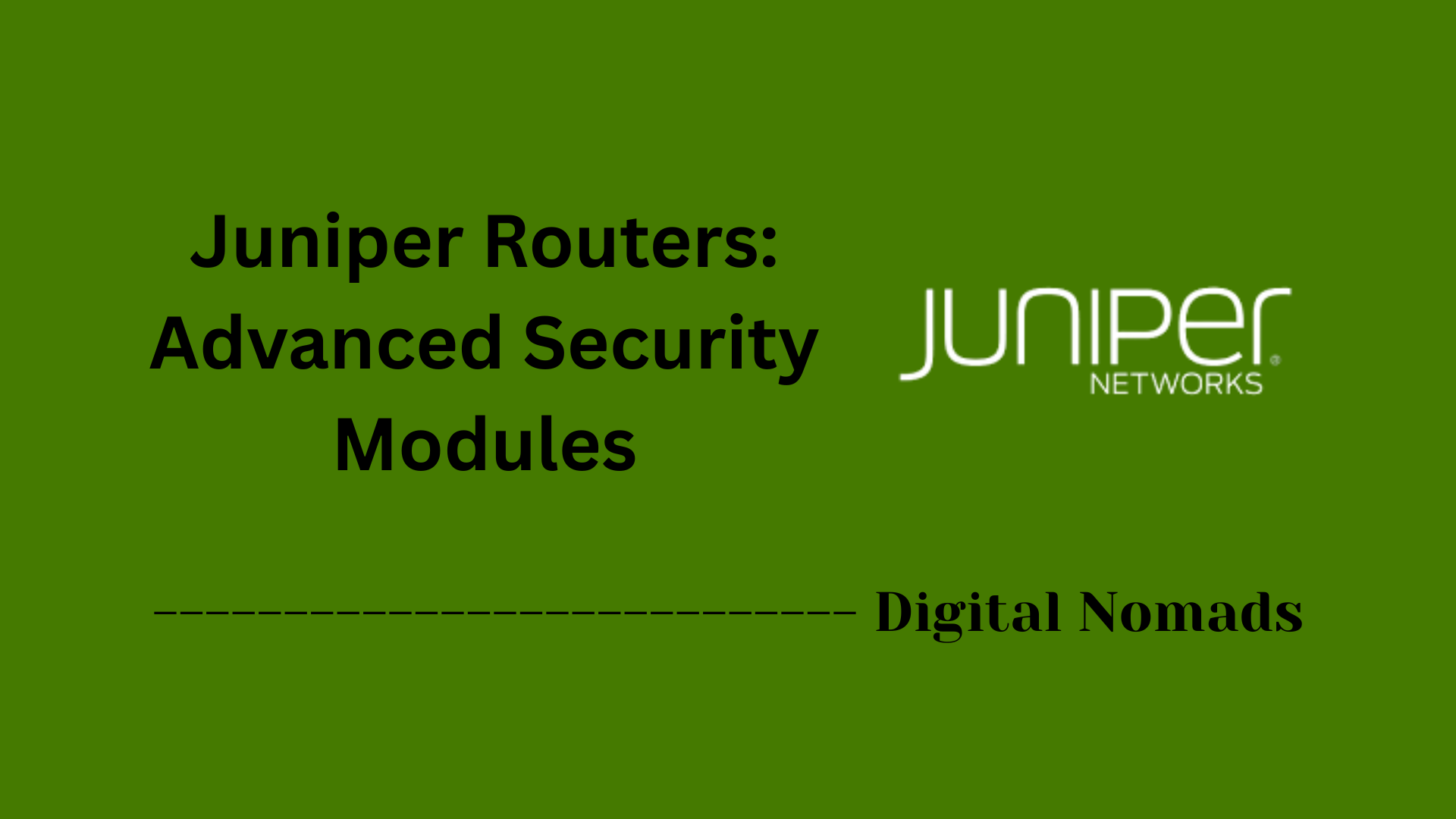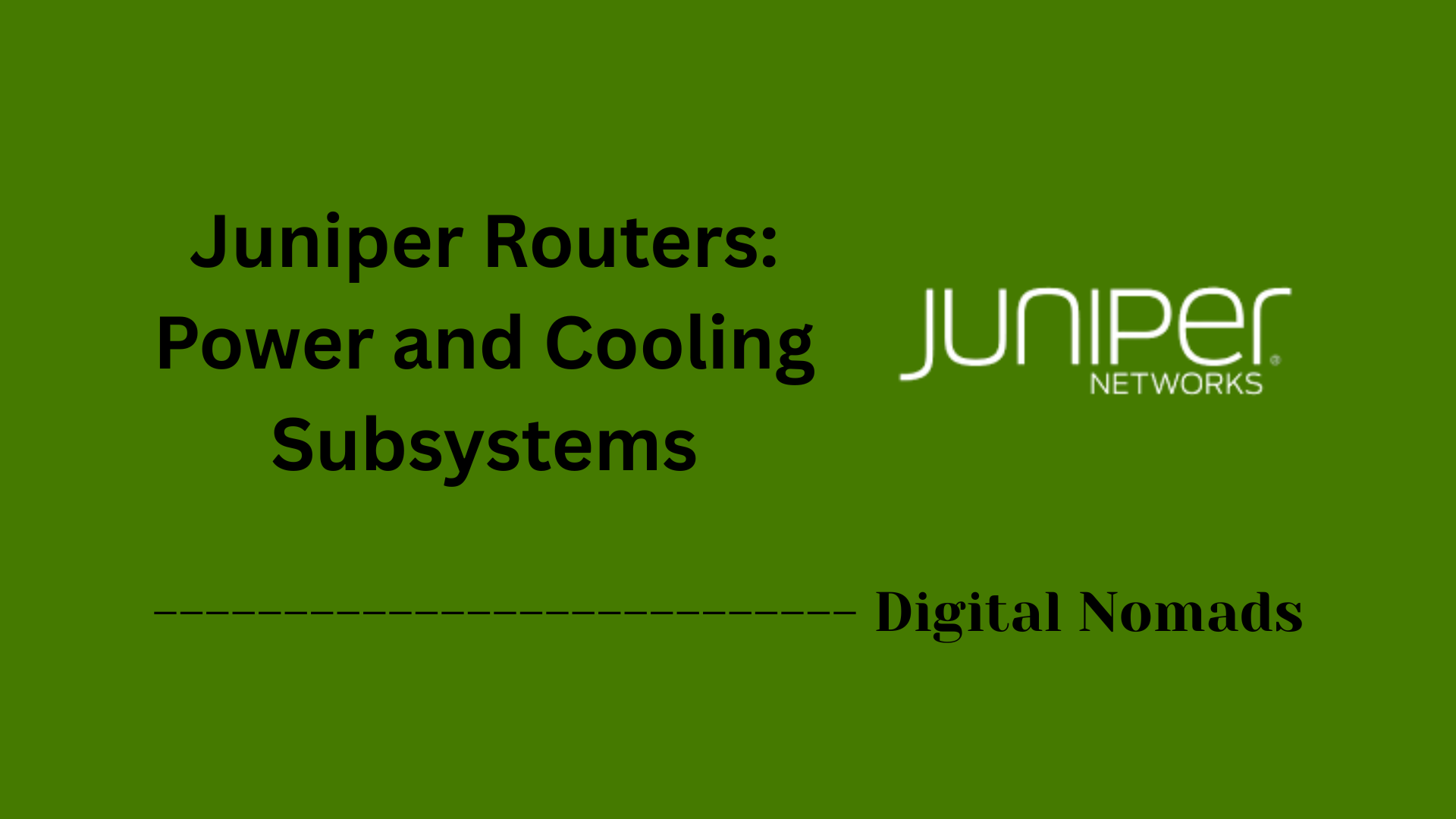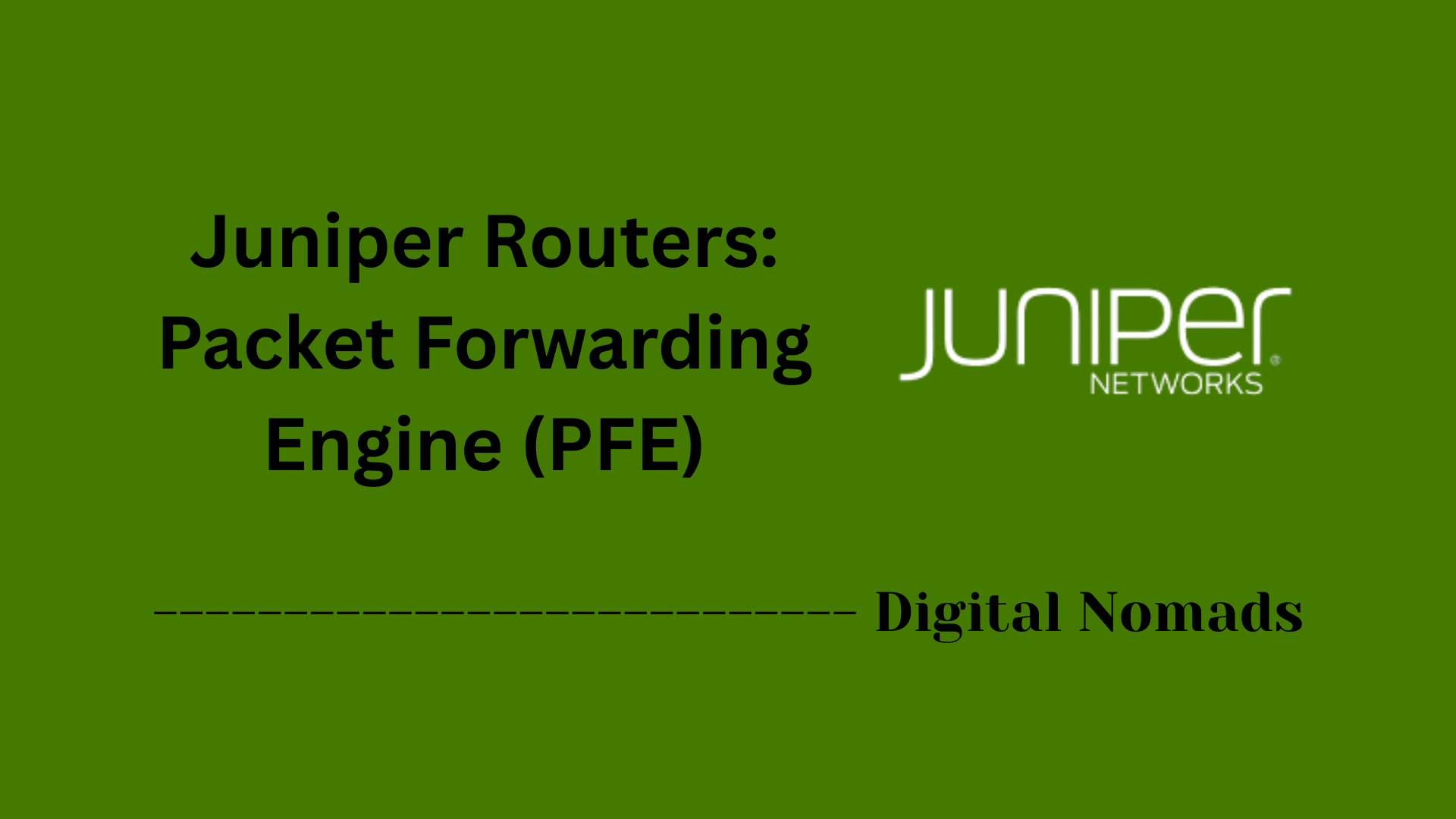Table of Contents
- Overview
- Module Types & Terminology
- Compatibility Matrix
- Configuration Syntax
- Physical & Operational Attributes
- Vendor Documentation & Further Reading
- Conclusion
Overview: Juniper Routers – Flexible Interface Modules (FIMs)
What Are Flexible Interface Modules (FIMs)?
Flexible Interface Modules, commonly known as FIMs, are modular hardware components designed for Juniper routers—especially the MX Series. FIMs encompass a range of slot-based modules such as Flexible Port Concentrators (FPCs), Physical Interface Cards (PICs), Modular Port Concentrators (MPCs), and Modular Interface Cards (MICs). These modules are the building blocks that provide network connectivity, enabling different types of ports (e.g., Ethernet, fiber, SONET/SDH) and supporting various network speeds and interface densities.
Why You Need to Know About FIMs
Understanding FIMs is essential for several reasons:
- Scalability: FIMs allow organizations to increase or change the number and type of interfaces as their needs evolve, extending the life of existing hardware.
- Flexibility: By mixing and matching different modules, network engineers can customize routers for specific roles—data center, campus core, WAN edge, or service provider backbone.
- Cost Efficiency: Instead of overhauling entire routers for new interface requirements, you can upgrade or swap out only the needed modules, reducing capital expenditures and downtime.
- Downtime Reduction: Many FIMs are hot-swappable, allowing maintenance or upgrades without powering down the router, which keeps the network running smoothly.
- Future-Proofing: Modular platforms let you adopt new technologies—such as faster Ethernet or new optics—by simply changing modules, helping your infrastructure adapt to new business or technical requirements.
How Flexible Interface Modules Work
Juniper routers are designed with physical slots into which FIMs can be inserted. Each type of FIM has a designated role:
- FPCs and MPCs: These are primary modules that provide switching and packet forwarding functionality. MPCs support even higher bandwidth and greater flexibility than FPCs.
- PICs and MICs: These modules physically connect the router to network cables or optics. They fit into FPCs and MPCs, respectively, and come in versions supporting different speeds and protocols.
- DPCs: Integrated modules for dense port configurations in some legacy models.
Network administrators install or swap out these modules as needed, using the Juniper CLI to configure how each interface operates in the network. The modular approach means a single router chassis can serve diverse environments—from enterprise backbones to carrier-grade deployments—simply by plugging in the right modules and updating configuration as desired.
In summary, Flexible Interface Modules are central to Juniper’s approach to building scalable, adaptable, and reliable networks. Mastery of these modules empowers network professionals to craft solutions tailored to changing requirements, with efficient use of resources and minimal disruption.
Module Types & Terminology
This section introduces the main types of modules used in Juniper routers and explains key terms needed to understand Flexible Interface Modules (FIMs):
- Flexible Port Concentrator (FPC): Installed in modular chassis (such as MX240, MX480, MX960), these modules provide packet forwarding services and serve as the platform into which additional interface cards are inserted.
- Physical Interface Card (PIC): Mounted within FPCs, PICs provide the physical network interfaces (such as Ethernet or SONET/SDH ports). PICs are hot-swappable for higher uptime.
- Modular Port Concentrator (MPC): Used in later-generation MX series routers, MPCs also handle packet forwarding but accept Modular Interface Cards (MICs) for flexible interface options and higher bandwidth.
- Modular Interface Card (MIC): These are inserted into MPCs and provide a variety of interface types (like Gigabit Ethernet or 10-Gigabit Ethernet). MICs can be removed and replaced while the device is running.
- Dense Port Concentrator (DPC): Integrated line cards from earlier generations, DPCs focus on port density and throughput.
Additional terms:
- Slot: The physical bay in a router chassis where a module (like an FPC or MPC) is installed.
- Line card: General term for modules (such as FPCs, MPCs, or DPCs) responsible for packet forwarding.
- Hot-swappable: Indicates that a module can be replaced without powering down the system, which minimizes network downtime.
Compatibility Matrix
This section shows which Flexible Interface Modules (FIMs)—including FPCs, PICs, MPCs, and MICs—are supported by different Juniper MX Series router chassis. Refer to it when planning upgrades or selecting new hardware modules.
| Module Type | Supported Chassis | Compatible Cards | Key Notes |
|---|---|---|---|
| FPC (Flexible Port Concentrator) | MX240, MX480, MX960 | PIC (Physical Interface Cards) |
Each FPC holds up to 2 PICs. Chassis max FPCs: MX960 (6), MX480 (3), MX240 (1)[9]. |
| PIC (Physical Interface Card) | Same as FPC (MX240, MX480, MX960) | Inserted in FPCs | PICs provide ports for different media (Ethernet, SONET, etc.). Entry of blank PICs required for unused slots[9]. |
| MPC (Modular Port Concentrator) | MX240, MX480, MX960, MX2008, MX2010, MX2020, MX10003 | MIC (Modular Interface Cards) |
Each MPC supports 1–2 MICs (varies by model). Not all MICs are supported in every MPC/chassis—always check latest Juniper documentation[5][7]. |
| MIC (Modular Interface Card) | MX routers with compatible MPC slots or small fixed MX models | Installed in MPCs or directly in small MX models | Module support depends on both chassis and MPC version. MX5, MX10, MX40, MX80 support MICs directly in chassis[5]. |
| DPC (Dense Port Concentrator) | MX240, MX480, MX960 | (Integrated module) | DPCs were an early high-density option. Only certain port types supported; being phased out on newer routers[5]. |
Notes for Use:
- Always consult the Juniper Hardware Compatibility Tool for the latest supported combinations of modules, chassis, and software.
- Not all MICs or PICs function in all MPCs/FPCs or router models—firmware and hardware versions matter; refer to Junos release notes and compatibility tables for your MX model[7][1].
- Blank slots should be filled with a blank card to maintain optimal airflow and cooling[9].
Configuration Syntax
This section illustrates common configuration patterns for Flexible Interface Modules (FIMs) in Juniper MX Series routers using Junos OS. Below you'll find examples and explanations for referencing, configuring, and managing hardware interface modules and their ports.
-
Interface Naming Convention:
Physical and logical interfaces use:<type>-<fpc>/<pic>/<port>.
<type>: Interface type (e.g., ge = Gigabit Ethernet, xe = 10GbE, et = 100GbE)<fpc>: FPC/MPC slot number<pic>: PIC or MIC slot number in the FPC/MPC<port>: Physical port number on the card
ge-0/1/2= Gigabit Ethernet, FPC 0, PIC/MIC 1, Port 2. -
Basic Interface Configuration Example:
-
Description for an interface:
set interfaces ge-0/1/2 description "Uplink to Core Switch" -
Assign an IP address:
set interfaces ge-0/1/2 unit 0 family inet address 198.51.100.1/24
-
Description for an interface:
-
Set Physical Properties (e.g. speed):
set interfaces xe-0/0/0 speed 10g -
Defining Logical Interfaces (units):
Each physical port usesunit 0by default for Layer 3.
ge-0/0/0.0is the first logical unit on port ge-0/0/0.
-
Bridge (Layer 2) Configuration Example:
-
set interfaces ge-0/0/0 encapsulation ethernet-bridge
set interfaces ge-0/0/0 unit 0
-
Layer 3 Reference Example:
set interfaces ge-0/0/0 description "Branch Office Link" set interfaces ge-0/0/0 unit 0 family inet address 10.20.30.1/24
Layer 2 Bridging Example:
set interfaces ge-0/0/0 encapsulation ethernet-bridge set interfaces ge-0/0/0 unit 0 set interfaces ge-0/0/1 encapsulation ethernet-bridge set interfaces ge-0/0/1 unit 0 set bridge-domains LAN1 domain-type bridge set bridge-domains LAN1 interface ge-0/0/0.0 set bridge-domains LAN1 interface ge-0/0/1.0
-
Quick Tips:
- Use the precise slot and port numbers for your hardware model.
- Physical interface configuration is always at
interfaces <type>-fpc/pic/port. - Logical units group interface sub-features such as VLANs or IP addressing.
- Bridge domains combine Layer 2 interfaces for switching.
Physical & Operational Attributes
This section highlights the key physical and operational characteristics of Flexible Interface Modules (FIMs) and related line cards used in Juniper routers.
-
Hot-Swappability:
Most FIMs, including FPCs, PICs, MPCs, and MICs, are hot-swappable. You can replace or add these modules without needing to power down or reboot the router, minimizing network disruption and downtime[3][6]. -
Redundancy and High Availability:
Juniper routers support module and chassis-level redundancy. Installing redundant modules (such as power supplies or routing engines) can ensure continued operation in the event of hardware failure[5]. -
Flexible Media Support:
Modules support a wide range of interface types, including copper (10/100/1000 Mbps Ethernet), fiber Ethernet (1G/10G/100G), and legacy SONET/SDH. Many modules can accept pluggable optics for on-demand media changes[3]. -
High Port Density:
FIMs are available in configurations supporting many physical ports per card, enabling dense aggregation and efficient use of chassis space[3][6]. -
Field Replaceable Units (FRUs):
Most modules and many components (power supplies, fans) are designed for easy replacement in the field, simplifying maintenance and upgrades[6]. -
Physical Security Features:
Routers and modules often feature robust chassis with tamper-evident seals and hardware-level security mechanisms to meet regulatory requirements and prevent unauthorized access[4]. -
Operational Monitoring:
Each module’s status (such as temperature, power, and operational health) is accessible via LEDs on the chassis and through Junos OS CLI commands. Automated monitoring helps detect and respond to issues proactively[5]. -
Efficient Cooling and Airflow:
Blanks must be installed in unused slots to maintain optimal airflow and cooling, helping prevent overheating and ensuring maximum module lifespan[9].
Summary Table: Key Physical & Operational Features
| Attribute | Description |
|---|---|
| Hot-Swappable Modules | Replace or add cards without powering down |
| Redundancy | Supports redundant power, routing engines, fans |
| Wide Media Support | Copper, fiber, and various optics for high flexibility |
| Field Serviceability | FRUs simplify in-the-field maintenance |
| Physical Security | Tamper seals and strong chassis enclosures |
| Status Monitoring | LEDs and CLI status for proactive operations |
| Density & Cooling | High port counts, blank panels optimize airflow |
Vendor Documentation & Further Readings
For authoritative information on Flexible Interface Modules (FIMs) and Juniper MX Series routers, consider these official vendor resources and partner-supplied materials. Consulting them ensures up-to-date insights on compatibility, configuration, and capabilities.
-
Juniper Networks Official Documentation:
-
MX Series Interface Module Overview:
A comprehensive explanation of interface modules, including FPCs, PICs, MPCs, and MICs, with configuration examples and slot details.
See: MX Series Interface Module Overview – Juniper Networks[2] -
MX Series 5G Universal Routing Platform Interface Module Guide:
In-depth, model-specific lists and compatibility information for all current interface module types.
See: MX Series 5G Universal Routing Platform Interface Module Reference[4] -
Hardware Compatibility Tool (HCT):
Find officially supported line cards, optics, and transceivers for your specific chassis and Junos OS version.
See: Juniper Networks Hardware Compatibility Tool[16]
-
MX Series Interface Module Overview:
-
Product Data Sheets & Partner Documentation:
-
Detailed specifications, supported features, and ordering details.
See: Juniper Certified Pre-Owned Datasheets[9] -
Reference guides for specific interface cards, modules, and legacy compatibility.
See: Andover Consulting Group PDFs on MX Interface Modules[3][4]
-
Detailed specifications, supported features, and ordering details.
-
Operational & Configuration Guides:
-
Ethernet interface configuration options, best practices, and step-by-step CLI examples.
See: Junos OS Ethernet Interfaces User Guide[8] -
Official hardware installation guides for major chassis (e.g., MX960, MX480, MX240).
See: MX Series Hardware Guides – Juniper Networks[20]
-
Ethernet interface configuration options, best practices, and step-by-step CLI examples.
Tips for Using Vendor Documentation:
- Always check release notes for your Junos OS version before ordering new modules.
- Use the Hardware Compatibility Tool before performing upgrades to verify support for your hardware and transceivers.
- Review the product datasheets and official installation guides for physical requirements, supported features, and advanced configuration scenarios.
Conclusion
Throughout this blog post, we've explored the essential aspects of Juniper Routers' Flexible Interface Modules (FIMs). From understanding the different module types and terminology—such as FPCs, PICs, MPCs, and MICs—to examining the compatibility matrix that guides hardware choices, we've seen how modular design provides scalability and flexibility. The configuration syntax section highlighted how Junos OS references and sets up these interfaces, enabling precise control over network connections. Additionally, we discussed the physical and operational attributes that make these modules reliable and easy to maintain, such as hot-swappability, redundancy support, and robust monitoring capabilities. Finally, we pointed you toward valuable vendor documentation and resources to help you stay up-to-date with the latest hardware and software releases.
By mastering these concepts, network professionals can confidently design, implement, and maintain Juniper routing infrastructures tailored to evolving business needs—maximizing uptime, performance, and flexibility.
Thank you for joining us on this deep dive into Juniper FIMs. Happy networking!




